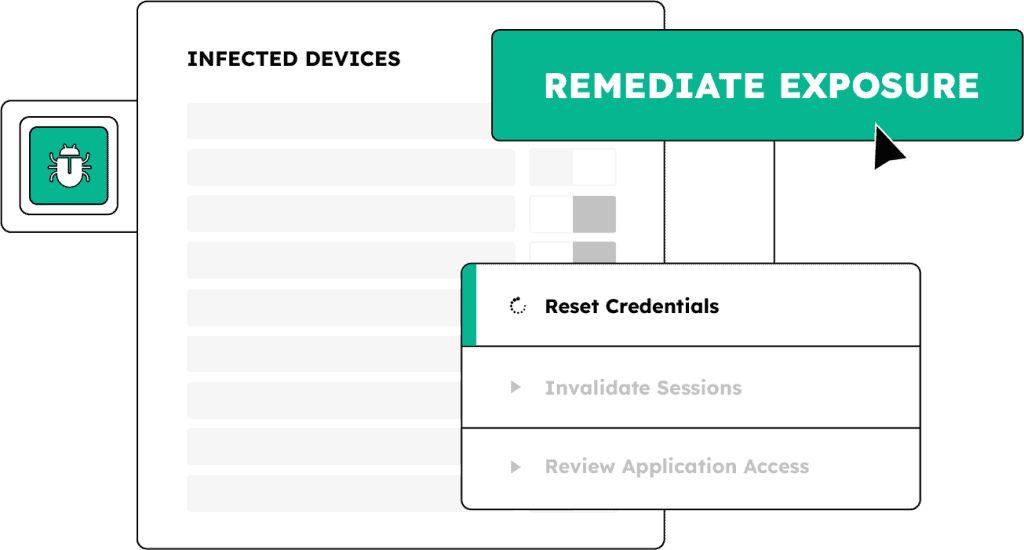SOLUTIONS
Holistic Identity Threat Protection
SpyCloud empowers businesses to prevent, remediate, and investigate cybercrimes
Our holistic identity approach illuminates and eliminates hidden darknet exposures across employees, contractors, customers, and non-human accounts – and allows analysts and investigators to achieve deeper insights and faster outcomes than ever before possible.

Protect employee identities,
safeguard consumer identities,
power cybercrime investigations
Reduce your risk of ATO and other targeted identity-based threats by acting on known points of compromise.
Take a proactive approach to combating account takeover and stop high-risk attacks tied to malware.
Access comprehensive breach, malware, and successfully phished data to add value to security and fraud detection products and services.





SpyCloud offers out-of-the-box API integrations with top technology vendors across SIEM, SOAR, EDR, TIPs and more to power analysis, detection, and remediation via automated workflows.
SpyCloud is the edge you need to make stolen
identity data useless to bad actors
At the root of the cyberattacks most costly to businesses are identity exposures that give attackers a way into your enterprise. SpyCloud takes the advantage away from criminals and gives it back to you.
WITHIN
5
minutes
Up to
60%
SOC TEAM TIME AND RESOURCES SAVED
12x
MORE IDENTITY RECORDS
GET MORE ANSWERS WITH HOLISTIC IDENTITY MATCHING
875B+
RECAPTURED ASSETS
200+
DATA TYPES
RECAPTURED breach, malware and phishED data
3.5
MONTHS
AVERAGE PAYBACK PERIOD FOR SPYCLOUD CUSTOMERS
TEAMS WHO USE SPYCLOUD
Powering security and identity teams worldwide
SpyCloud is the secret weapon for security leaders, practitioners, and service providers.
Next steps
Start here
Uncover threats to your organization like malware-infected employees, stolen session cookies, and recency of breach exposures